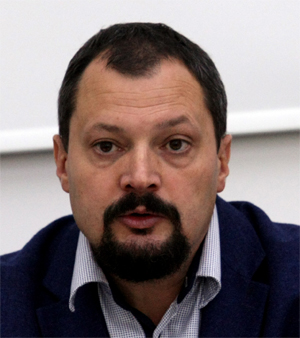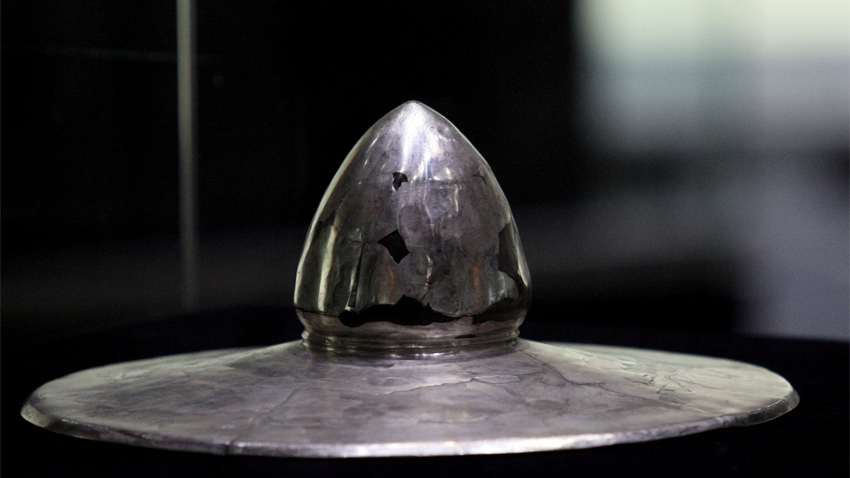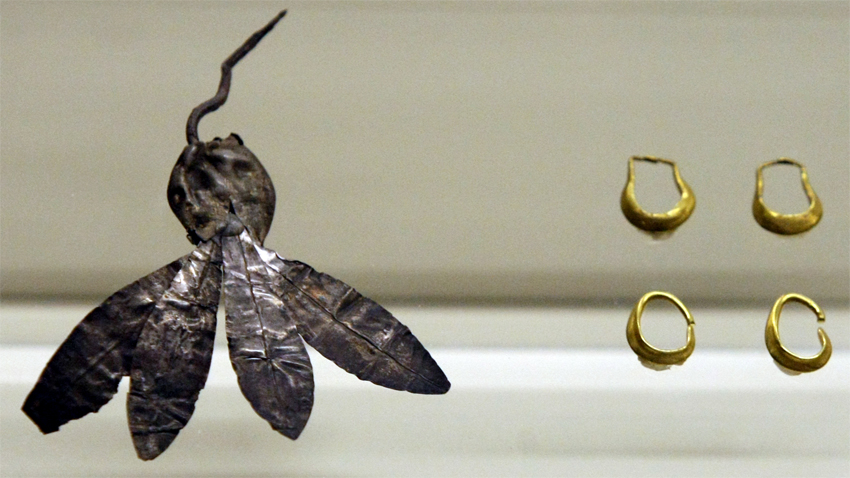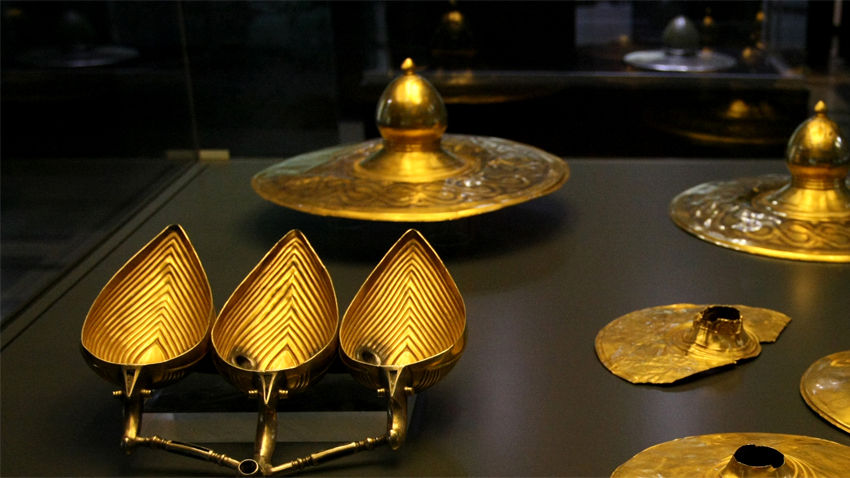By the end of January 2018, in two of the halls of the National Archaeological Museum in Sofia one can see the exhibition "Gold and Bronze: Metals, Technologies and Contacts in the Eastern Balkans during the Bronze Age." At its core is a joint project of the National Archaeological Institute with Museum at the Bulgarian Academy of Sciences (NAIM) and the Institute for Oriental and European Archeology at the Austrian Academy of Sciences (OREA), dedicated to the golden path of the Balkans during the Bronze Age. In the framework of the same project at the beginning of this year, the Kunsthistorisches Museum in Vienna presented the exhibition "The First  Gold. Ada Tepe: the oldest gold mine in Europe." The difference in the two exhibitions is that the one in Sofia puts on display more exhibits - over 600 that come from the collections of 29 archaeological and historical museums across the country. More from Prof. Dr. Hristo Popov, Deputy head of NAIM:
Gold. Ada Tepe: the oldest gold mine in Europe." The difference in the two exhibitions is that the one in Sofia puts on display more exhibits - over 600 that come from the collections of 29 archaeological and historical museums across the country. More from Prof. Dr. Hristo Popov, Deputy head of NAIM:
"The idea was to show the results of a leading scientific project for us, which we have been working on for years with Austrian colleagues and representatives from various Bulgarian and international institutions, related to the study of Ada Tepe – a gold mine dating back to the Bronze Age in the region of today's Krumovgrad. We wanted to show not only beautifully arranged items, but to focus on history. That is why we created films and digital reconstructions to visualize in a broader way the information we present."
Prof. Popov told us more about the exhibits and which spheres of social development are presented:

"The entire Bronze Age of today's Bulgarian lands covers the period from the second half of the 4th millennium BC until the second half of the second millenium BC that is a period of some 2300-2400 years. It is divided into early, middle and late Bronze Age. It is characterized by the emergence of new technologies and materials. This is the first period in the history of mankind, in which mixing of metals started. The first experiments in the field of metallurgy related to the production of alloys date back to this era. Bronze alloy consisting of tin and copper became working material of mankind. From it people produced all types of basic tools and weapons. This accumulation of resources and wealth that involved controlling a certain type of minerals, created social differentiation, elites, people who have these resources and somehow control their distribution. The development of certain technologies and professions, such as that of the miner, the metallurgist, the master metallurgist, etc. became extremely important during this period as long as they provided the basic objects and materials needed for the functioning of society.”

Swords, axes, molds for their production, bone figurines, armor, gold jewelry, and many other household items can be seen in the exhibition. How do scientists explain the fact that thousands of years ago people were producing such fine-quality objects?

"Taste, aesthetics and high technological skills are important. This was not a short process of development,” Dr. Hristo Popov says. “We are talking about a period of 2300 years, that is, there is a gradual accumulation of knowledge and skills. Technological progress is realized as a final vision in various objects. There is a process in which rare metals - gold and silver - become a symbol of status of people who are able to find, process and subsequently possess them. In the exhibition we have tried to draw attention to the fact that all these objects, some of which are passed on from generation to generation, are related to the possession of craft skills and tools by that person, displaying status."
More from Prof. Popov about the accents of the exposition:

“There are more than one or two exhibits that cause curiosity and interest. For example, oxhide ingots that are rare. In this part of Europe, Bulgaria has the largest number of such finds. The find from Pobit Kamak, including stone molds for casting a variety of bronze objects and the unique Valchitrin gold treasure, which is the largest in Europe dating back to the Bronze Age.”
English: Alexander Markov
Photos: BGNESFrom 31 January 2025, the first podcast about Bulgarian Orthodox communities abroad - Bridge of Faith - will be launched. The concept is the brainchild of the team of the Bulgarian National Radio's (BNR) overseas programme - Radio Bulgaria, and is being..
It is 131 years since the birth of Tsar Boris III, dubbed unifier. Boris Saxe-Coburg-Gotha found himself at the head of Bulgaria after the abdication of Tsar Ferdinand after the defeat of the country in World War I. The young monarch was crowned..
The ancient city Heraclea Sintica is among Bulgaria's most attractive tourist sites presented at international tourist exhibitions in Vienna and Stuttgart , Katya Stoyanova, head of the project "Restoration, conservation and socialization of Heraclea..
Pipes from the end of the 17 th , the 18 th and the 19 th century and the tradition of growing tobacco in Bulgaria are presented in the newest..

+359 2 9336 661
